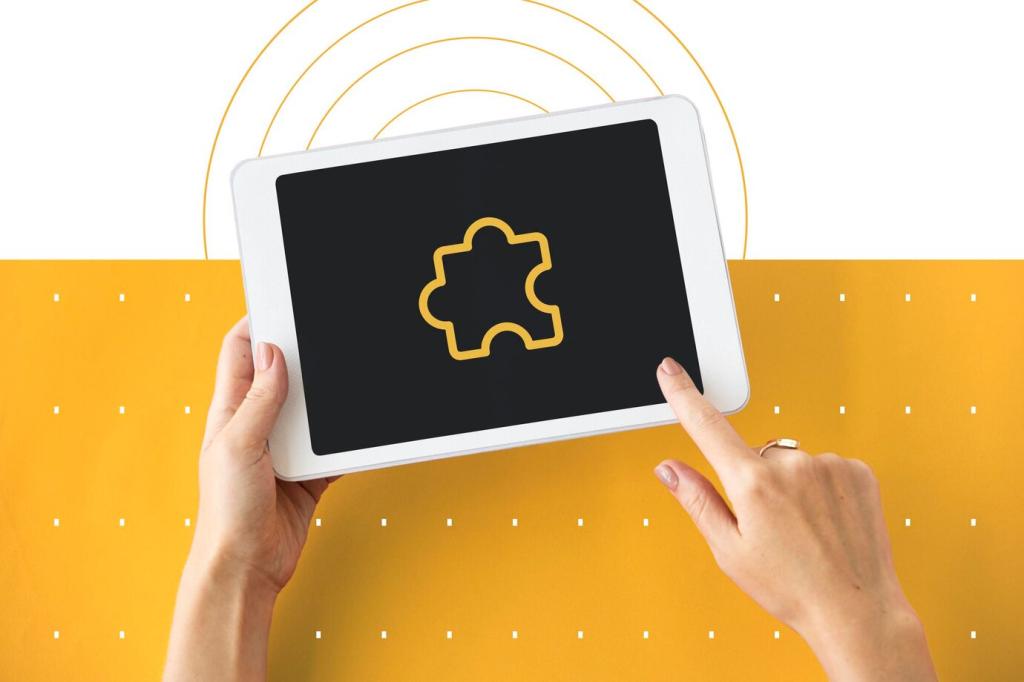
Chosen Theme: Cutting-Edge Robotics Developments
Step into the frontier where robots gain sharper senses, gentler hands, and smarter minds. Explore fresh breakthroughs, field stories, and practical insights. Join the conversation and subscribe to shape what comes next in robotics.


Sensing the World: New Eyes, Ears, and Touch for Robots
Event-based cameras capture change instead of frames, thriving in fast motion and high contrast. In warehouse sorting trials, they cut latency dramatically, reducing missed detections and enabling smoother, safer manipulator handoffs.
Sensing the World: New Eyes, Ears, and Touch for Robots
Robots now fuse touch, vision, and sound, inferring object properties humans take for granted. A kitchen assistant learned to distinguish greasy plates from clean ones by fingertip vibrations, improving reliability without changing hardware.
Hands that Learn: Dexterous Manipulation and Soft Robotics
Soft grippers with variable stiffness handle peaches, vials, and microchips without drama. By jamming particles or inflating chambers, they adapt compliance on the fly, reducing scrap and delighting operators who once dreaded bruised fruit.
Hands that Learn: Dexterous Manipulation and Soft Robotics
Reinforcement learning now trains in-hand manipulation policies that reorient pens and bolts by feel. After thousands of simulated trials, a real robot completed assembly tasks faster than interns, who happily shifted to troubleshooting roles.
Hands that Learn: Dexterous Manipulation and Soft Robotics
Tactile arrays sense slip before vision notices. In a cluttered sink, a prototype adjusted grip on a soapy bowl, then safely placed it to dry. Share your trickiest household grasping test for our next experiment.
Moving with Confidence: Humanoids and Legged Locomotion
Quadrupeds and humanoids now handle uneven stairs by predicting contact quality, not just geometry. One team mapped squeaky wood treads as low-confidence zones, prompting shorter steps and fewer slips during a rainy, muddy campus demo.
Moving with Confidence: Humanoids and Legged Locomotion
Series elastic actuators store and return energy like tendons, extending runtime. A delivery bot finished a hilly route with ten percent battery remaining, enough to bring a forgotten latte to an amused security guard.
Moving with Confidence: Humanoids and Legged Locomotion
After a coastal storm, a legged robot carried medical kits over debris where wheels failed. Locals nicknamed it Gulliver, then filmed guidance tips, turning the deployment into a community-led tutorial for future emergencies.
Working Side by Side: Human–Robot Collaboration
Proactive Intent Prediction Reduces Hesitation
Collaborative robots anticipate human intent from gaze, posture, and task history, reducing awkward pauses. In a furniture plant, predictions cut handover time, and veterans taught robots shop slang like banana board and football.

Brains of the Machine: Foundation Models and Learning
Vision-language-action models let robots parse instructions like place the blue mug near the kettle. A lab demo linked web knowledge with real cabinets, proving compositional generalization beyond rote scripts. Subscribe for our upcoming reproducibility checklist.

From One to Many: Swarms, Drones, and Space Robotics
Self‑Organizing Swarm Behaviors
Bio-inspired swarm algorithms let hundreds of tiny robots form shapes, inspect pipelines, or search rubble safely. One class project re-created termite mounds with kilobots, then open-sourced the code. Want the repo link? Comment below.
Autonomous Inspection Drones at Wind Farms
Autonomous drones navigate around turbines using onboard perception and geofencing, tolerating gusts that would scare pilots. A technician recalled saving hours by trusting the drone’s path planner while focusing on interpreting thermal overlays.
Planetary Robotics: Lessons from Mars
Planetary missions push robotics to extremes: dust, delay, and radiation. Lessons from Mars sample handling now trickle into sterile lab automation on Earth, proving space-grade reliability can make daily workflows calmer and safer.
